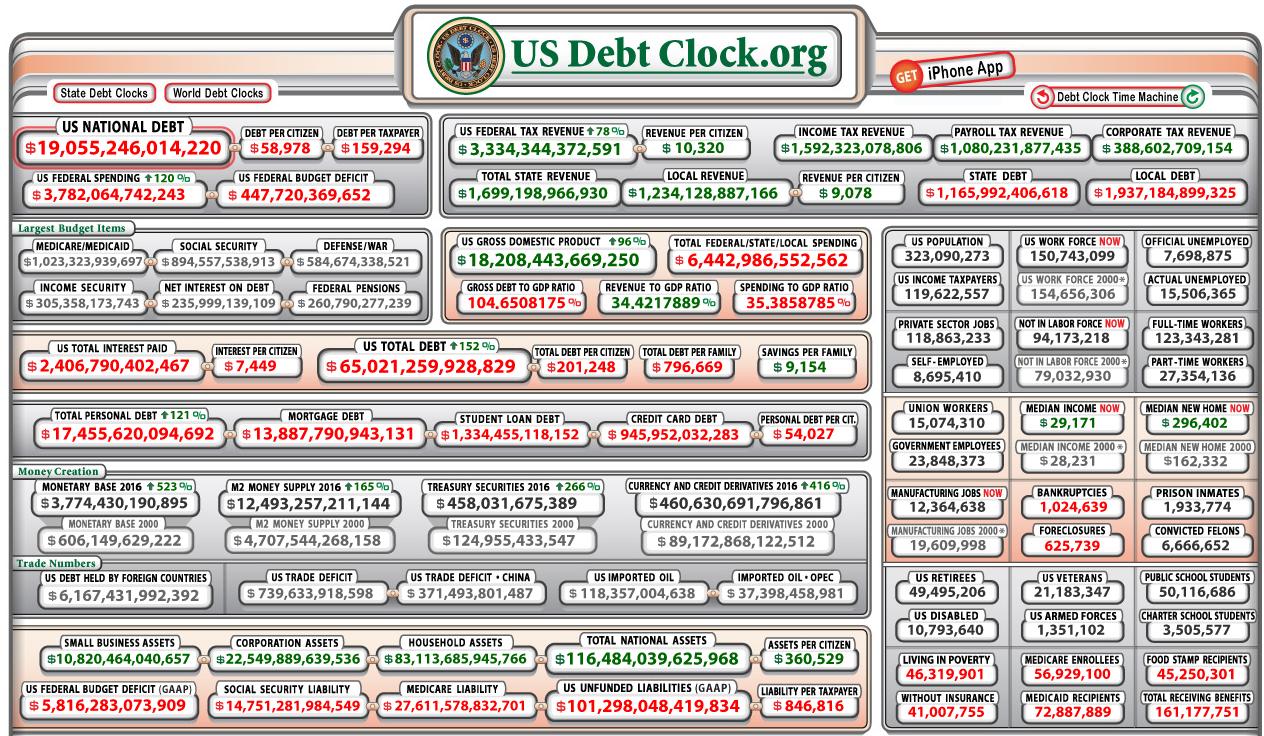Don't Forget the Assets
2/29/16
Doom and gloomers in the investing arena, or those involved with "doom porn", are, frankly, freakin' hilarious entertainment to professionals in the economics, finance, and investing fields. Most are a mix of anti-USA, anti-Federal government, anti-Federal Reserve, and anti-fiat money beliefs (except when it suits them, of course). For example, most freely choose to live and work in the United States and participate in the capital markets. Also most all deny they are the "doom porn" types, but rather educating the public on how to escape the police state and get the real United States back.
Sure.
One thing they all share, however, is that they freak out about the "US National Debt" on the so-called "US Debt Clock". I've seen constant references to an unofficial site purporting to show statistics from the Federal government. Even if the underlying data they cite is correctly used, are the extrapolations? In any case, my emails to the contact email on that site have gone unanswered. I'm taking a leap here, but let's assume that everything on the "US Debt Clock" site is 100% correct.

Note the large, ~$19 trillion at the time of this picture, "US National Debt". This number, and the bizarre extrapolations that the Chinese will own your children, you will be able to buy a city block with an ounce of silver, a loaf of bread will cost $200, etc., so you should get all your money out of the bank, out of US Treasuries, etc., are what the doom and gloomers focus on.
Who in their right mind would analyze a balance sheet by only looking at the debt and not the assets and income? If I told you I am $60,000 in debt, is that good or bad? The answer is...you were not given enough information to determine the answer. What if now you're told I only have $1,000 in assets and only make $15,000 per year in income? OK, yes, then my debt is probably "bad". What if you were told I have $3,000,000 in assets and make $100,000 per year? Then the debt is probably manageable, no big deal.
Next time you see the big scary "US Debt Clock", after you've freaked out about the large "National Debt" number, take a look at the "Total National Assets" number. Then keep in mind that this much larger number is not even including other US assets like national resources, national parks, and some other stuff. After that, add in the income the US receives. Then add in the GDP. Then subtract out the "Public Debt" number, because that is debt that the US "owes itself" essentially.
If you're keeping track, that sum, the total "stuff" the US has, is at least an order of magnitude larger than the "US National Debt".
Please anonymously VOTE on the content you have just read:
Like:Dislike: